The history of the house began in the 18th century. It first appeared on the plan of Minsk in 1793. Edward Wańkowicz bought the house. He was a judge and the leader of the nobility in Minsk District in 1846. He was one of the representatives of the Wańkowicz family (the coat of arms ‘Lis’).
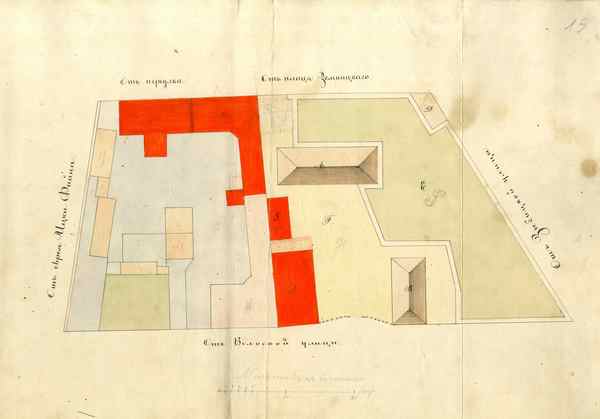
The estate complex included the manor house and the wings. The large elongated building on the left is the Wańkowiczs’ former stable and carriage house. There was a kitchen in the yellow wing on the first floor on the right, and the manager’s apartment was on the second floor. The entrance gate led to the estate, and the driveway was lined with trees.
The authors of the project wanted to revive this estate and to make it the center of musical and cultural life as in the 19th century. Many representatives of the Minsk noble intelligentsia, artists and musicians came here. Composer Stanisław Moniuszko, a close relative of Edward Wańkowicz, lived in his house. Writer Vintsent Dunin-Marcinkievič often visited it.
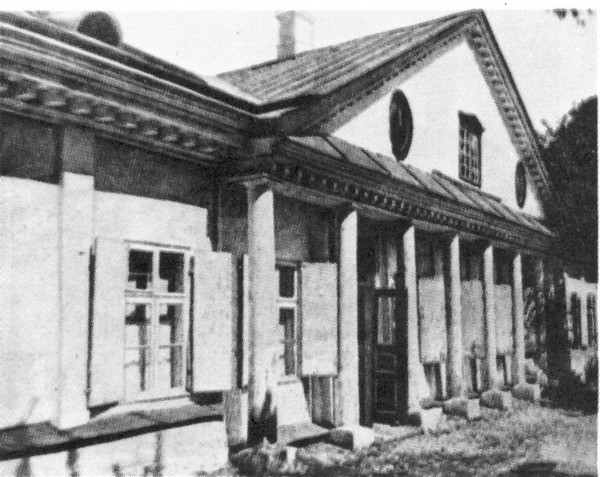
The Wańkowiczs lived in the estate until 1920. Its last owner was Piotr Wańkowicz, the grandson of Edward. Piotr Wańkowicz left all his property, and he moved to Poland. All the buildings of the estate were adapted for communal apartments in the 1920s.
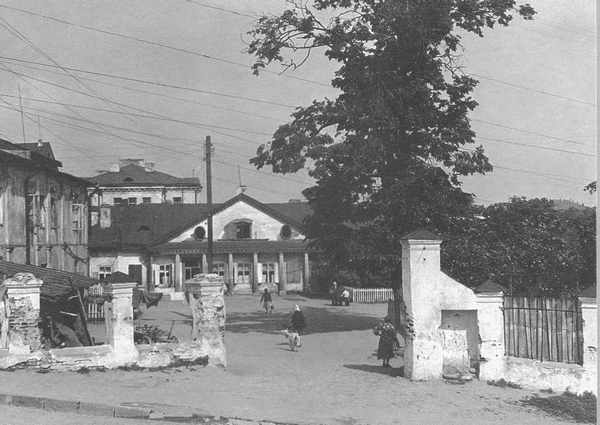
It was decided to turn the estate into a museum in 1980. There was its reconstruction: the manor house had to be dismantled, as it was in extremely poor condition. The current one was erected from new logs on the old foundation, using the technology of the 19th century.
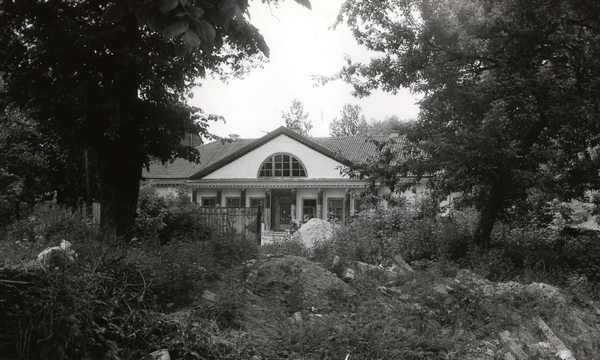
Since the furnishings of the Wańkowiczs’ house have not been preserved, the exhibits displayed in the museum – furniture, chandeliers, carpets and clocks (made in the 18th – first half of the 19th century) – were transferred from the funds of the National Art Museum of the Republic of Belarus.
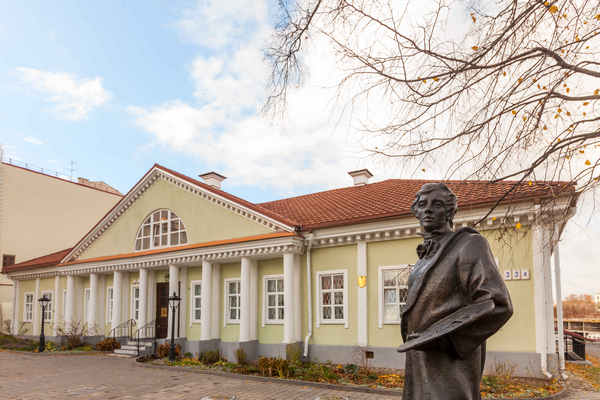
Uladzimir Slabodchykau’s sculpture ‘The Artist’s Morning’ is dedicated to Walenty Wańkowicz. The monument opening ceremony was in the yard of the estate in 2010. The sculpture presents the image of the Belarusian romantic artist.
The museum has three expositions: the interiors of the gentry’s estate of the late 17th – early 19th centuries; the portrait gallery with the estate portraits of the late 18th – early 19th centuries, and memorial halls of Walenty Wańkowicz’s life and work.
The first memorial hall
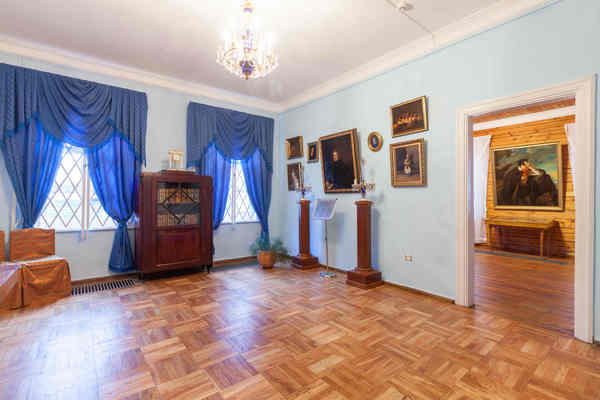
The memorial halls display archival documents, replicas and reproductions of works by artist Walenty Wańkowicz, as well as original works by Wańkowicz’s contemporaries: the portrait of Aleksandr Moniuszko (1816) by Jan Rustem; the portrait of Maria Mickiewicz (1856) by Tadeusz Gorecki; the portrait of Zinaida Divova (1841) by Ksawery Kaniewski; the still lifes of the 1830s by Jan Chrucki; paintings ‘Palm Sunday’ (1847) by Kanuty Rusiecki and ‘Paul I Frees Tadeusz Kościuszko’ (1820s) by Jan Damel.
Study
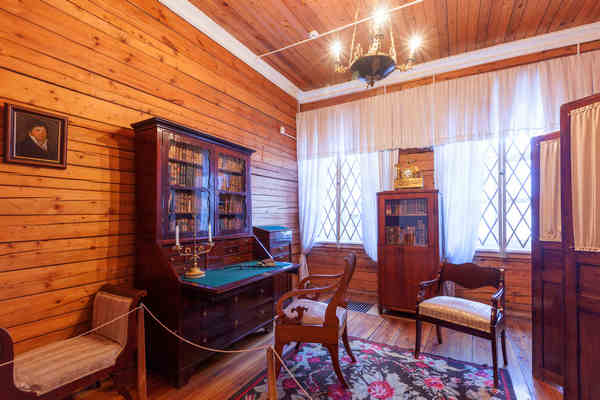
The study is a place for business receptions and recreation of the owner of the house. Its decor usually consisted of comfortable, compact and multifunctional furniture. This is a special design of the mahogany writing bureau combined with the dresser and bookcase. The serfs wove the carpet. There is also a desk, a bookcase, armchairs and a bench, a screen and a chandelier (1800–the 1830s) in the room. The bronze clock, chandelier, chibouk and books give an idea of the habits and interests of the owner of the study.
Portrait gallery
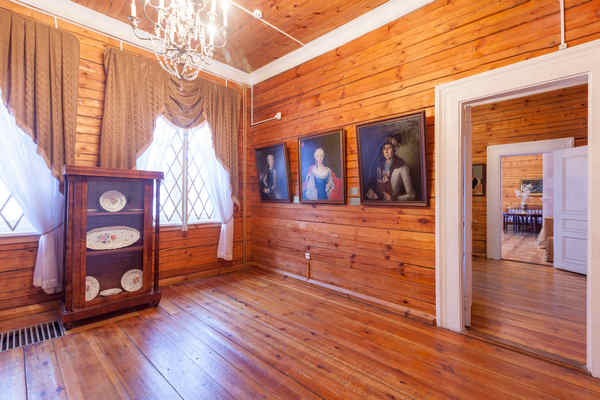
The portrait gallery is in three halls. The museum exposition does not have portraits of representatives of the Wańkowicz family, but most of those portrayed are contemporaries of Walenty Wańkowicz. They held different social positions in the society: magnates, petty gentry, the military, officials of judicial establishments, their wives and daughters. The portraits accurately depict their appearance, character, clothing and level of culture.
Dining room (the third portrait hall)
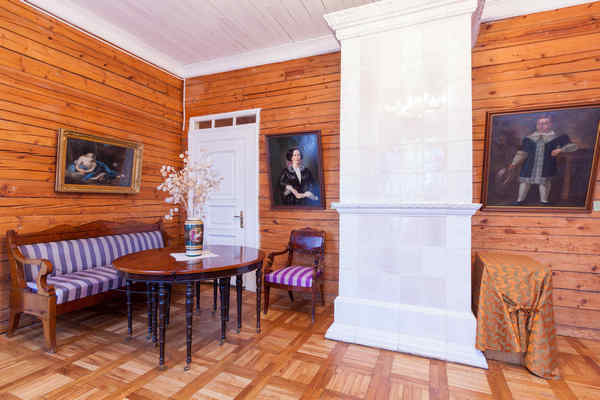
The last portrait hall is in the former dining room. The hall displays the portraits of the 30s and 40s of the 19th century.
In the hall, there are pieces of furniture made of mahogany: two armchairs and a sofa with a classic back, as well as a gate leg table.
Such a table could be the best solution for the dining room of Edward Wańkowicz, whose family had thirteen children.
Coffee room
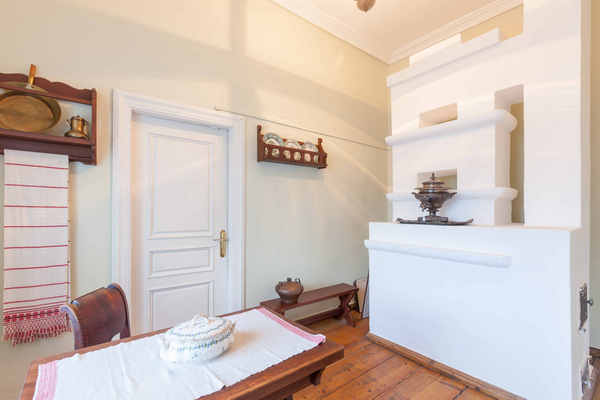
There was a coffee room in every noble house in the 19th century. It was a link between the kitchen, which was in one of the wings, and the dining room. Servants brought ready-made meals here. They served dishes in the dining room. They heated food on the stove, and they made ready a samovar. The owners made tea and coffee by themselves, because colonial drinks were very expensive in those times.
State drawing room
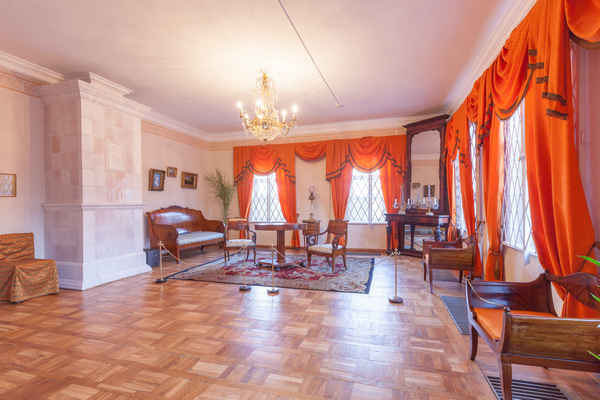
The state drawing room is the largest room in the house. There is a walnut wood set (1830s) – a sofa, two armchairs and a table on lion legs – in the center of the room. The wood set is on the carpet made at the Moscow Factory in Zavidovo in the 70s of the 19th century. The bright yellow wood is tinted under mahogany. There is also a mosaic wood etagere, an oval table, a 19th-century oil lamp designed by architect Carlo Rossi, and marble sculptures ‘Head of Dante Alighieri’ by an Italian master of the early 19th century and ‘Kiss of Cupid’ that is a replica of the famous composition by Antonio Canova (1757–1822).
Music room
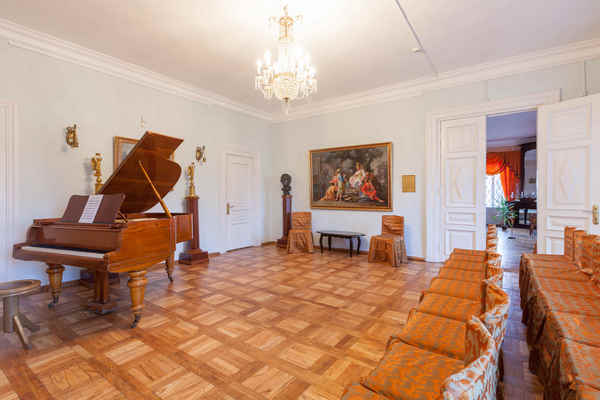
The music room of the museum has the main exhibit that is a grand piano made by the Menzel Company in the first half of the 19th century.
There are paintings ‘Minerva Patronizing the Muses of Science and Art’ by Tadeusz Kuntze (1731–1793), ‘Boar Hunting’ and ‘Landscape’ by Western European artists of the late 18th century on the walls.
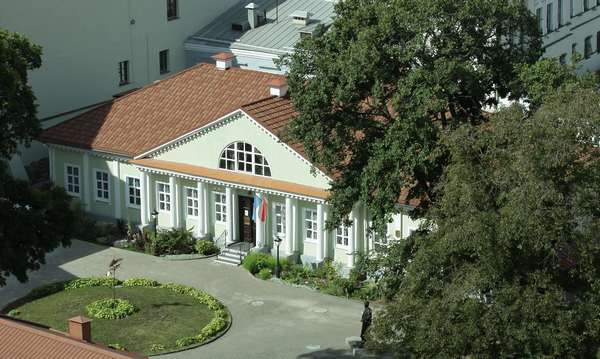
Today, the Museum ‘The Vankovichs’ House. Culture and Art of the first half of the 19th century’ continues the cultural traditions of the noble estate. There are exhibitions, evenings of classical, chamber and sacred music, and romances in the estate. Presentations and conferences, creative meetings with poets, writers and artists take place here.
Natalia Sychova headed the branch of the National Art Museum of the Republic of Belarus ‘The Vankovichs’ House. Culture and Art of the first half of the 19th century’ from 2000 to March 2015.
Siarhiej Vechar was the head of the branch from April to December 2015.
Sviatlana Jatsevich is the head of the branch from the spring of 2016 to the present day.


